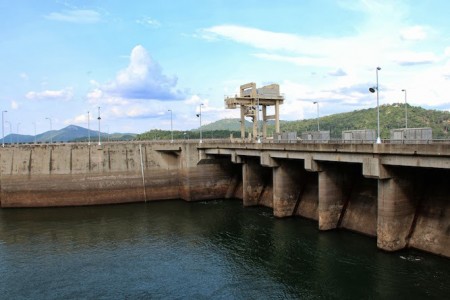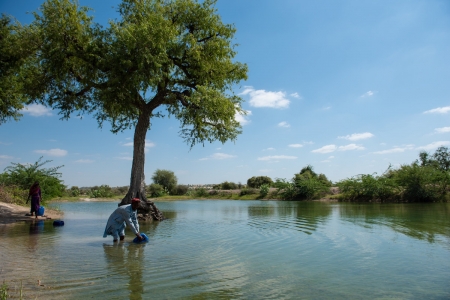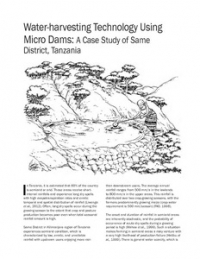Originally published as an Op-Ed on the Daily Mirror, Sri Lanka, republished here with minor edits.
In some ways, the reservoir near Mr. Kapuruhami’s farm looks more like an ungroomed football field. Stretching alongside rice paddies, the water’s surface is overlain with lotus pads and the scruff of tiny grass islands. Kapuruhami’s family has been farming in the Malwatu Oya river basin for generations. Each generation has relied on the water gifted by a unique irrigation system developed by ancient Sri Lankan kings.
As the Malwatu Oya meanders through the northern dry zone of Sri Lanka, it passes through the country’s ancient capital, Anuradhapura. The kings who ruled here from the fourth century BC fostered a vibrant civilization with an advanced hydraulic culture. Even to this day, the Malwatu Oya basin is dotted with hundreds of small inter-connected rainwater storage reservoirs, called small tank cascade systems, and slightly larger reservoirs into which the tank cascades drain. The whole system is a legacy of an ancient hydraulic revolution.
The modern world too, has seen its share of hydraulic transformation. But instead of thousands of small reservoirs, this revolution has seen the creation of multiple large dams across the world. Beyond supplying water for irrigation, large dams were transformational in their ability to generate hydro-electricity to power homes and industries.
Surface reservoirs, which include both the ancient small tank cascades bringing water to Mr. Kupuruhami, and the mega reservoirs of the modern era, remain a favored choice for water storage. Storing water in any form serves as natural insurance against variable rainfall regimes, increasingly important due to climatic change. However, surface reservoirs can have side effects that endanger natural river ecosystems and ecosystem services.
But at a time when the world debates the pros and cons of dams, it is crucial to understand what size, placement and number of reservoirs in a river basin work best. This includes understanding the relative benefits of distributed small reservoirs versus centralized large reservoirs. The ancient Sri Lankan system brings fresh insights to these debates.
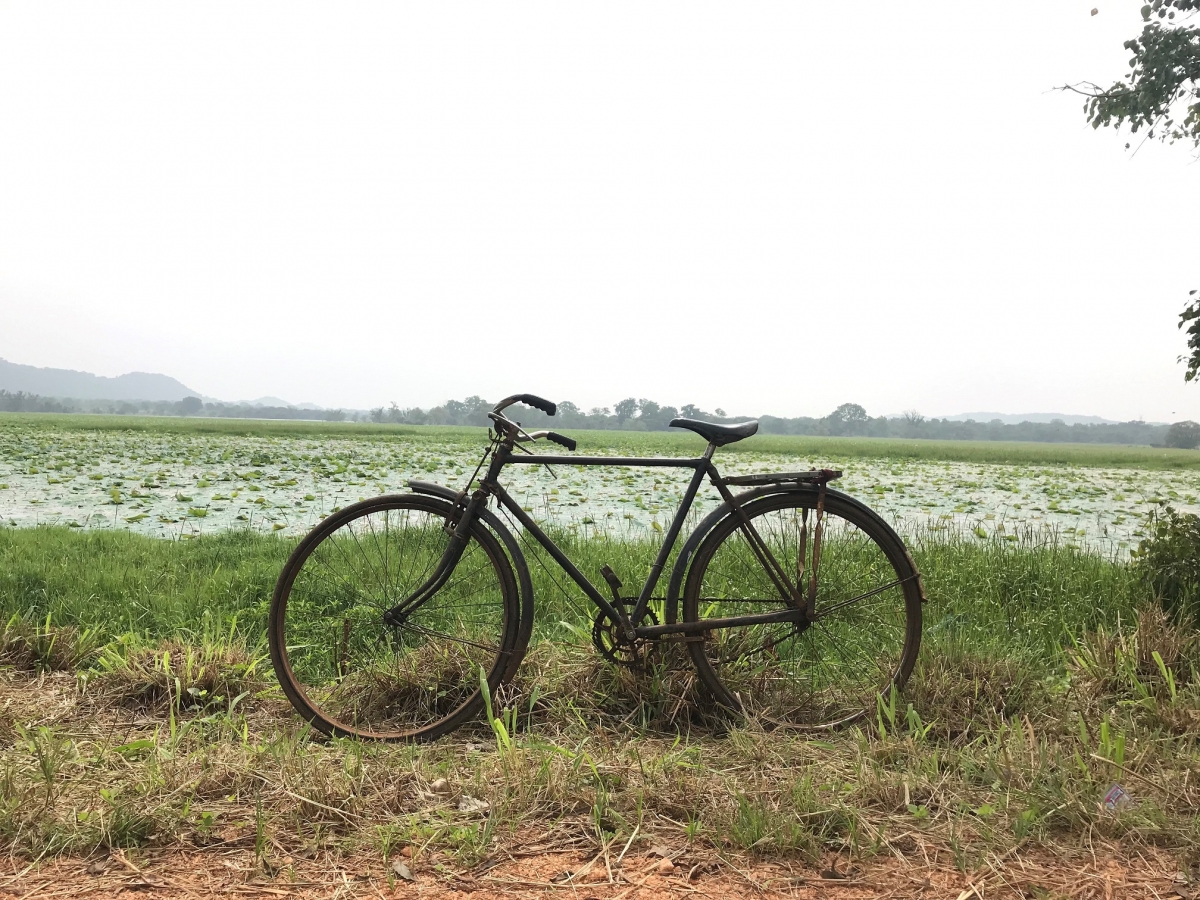
The pros and cons of large and small
The Malwatu Oya irrigation system alone has 179 cascades, spread across a little over 3000 km2. Today, 1100 individual tanks that make up the cascades are still functional, although many are in need of restoration work.
Being small and distributed across the landscape, the small tank cascades allowed access to water to a larger population and for more water to return to rivers and streams. To this day, this distribution also allows for more groundwater infiltration - water that sits under or near farms and can be reused by farmers.
A couple hundred kilometers south of Malwatu Oya lies the Kalu Ganga in the wet zone of the country. Kalu Ganga is a more voluminous river draining a landscape defined by steep slopes gradually leveling into milder terrain downstream. Here, a single small hydropower reservoir currently sits. In the future, the river’s water may be tapped by modern dams to transfer it to the dry zone – a reflection of the more recent hydraulic revolution. Modern dams are larger, more centralized systems and can provide higher volumes of water with a higher economic return. Large reservoirs can also generate electricity – key to many nations’ development strategies. But large dams can also displace thousands of people and impact downstream ecosystems and livelihoods. And their management is institutionally more complex than the community level management of distributed systems.
Small versus large reservoirs is not a black and white choice. Currently there is far more evidence on the impacts of large dams – from ecological to social to economic – than smaller reservoir systems. But that does not equate to large being worse than small. The small reservoir systems still need greater monitoring to assess their accumulated impacts – a daunting endeavor for an exponentially complex system.
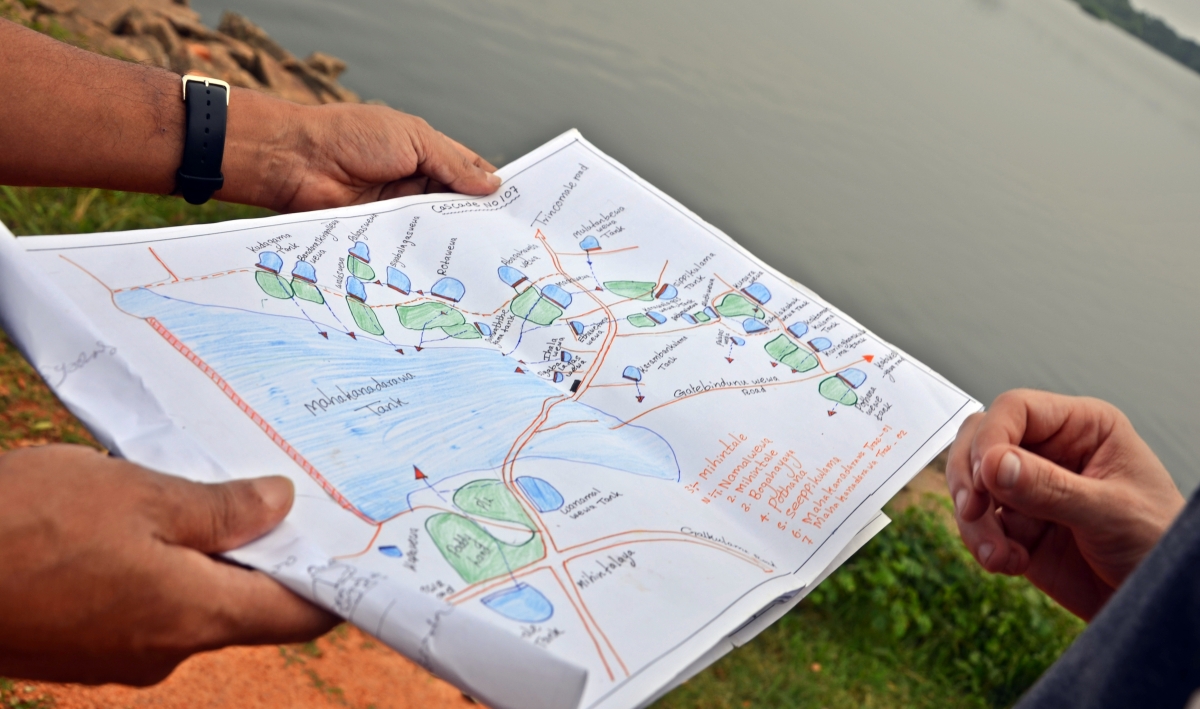
Legacies of the past give insights for our future
Thus, this dam debate should not use the “either-or” approach. Instead, creation of surface reservoirs should consider a balance of both, focusing more on finding optimal size, placement, and number of reservoirs to preserve the overall health of a river basin, while still using its water resources.
A study by Colombo-based International Water Management Institute (IWMI) fusing ancient technology and modern science explored this balancing act. Hydrological models of the Malwatu Oya basin, and its multiple tank cascades, and the Kalu Ganga basin, with its single reservoir, simulated river flows and estimated how different reservoir types would impact how much water is available, and at which time, for people as well as ecosystems. The results illustrated ways in which the number, size, location, water withdrawals and water releases of reservoirs in different parts of a river basin can be orchestrated to make reservoir development more holistically sustainable. The right mix can maximize benefits from storage while minimizing negative impacts on aquatic ecosystems and ecosystem services.
Overall, these two river basins and reservoir systems, reflective of ancient and modern hydraulic culture, gives us insights into how best to optimize surface water storage development. Sustainable storage is not just a small versus large question, but a matter of finding the best mix of systems and practices.
Ancient irrigation systems like Malwatu Oya with its network of small tank cascades and larger reservoirs may have tried to master this arrangement. For farmers like Mr. Kapuruhami, what they really need are answers that maximize water supply, while continuing to nourish the local ecosystems. Sri Lanka is looking to systems that mix both ancient wisdom and modern science, and perhaps the world should do so as well.
Nishadi Eriyagama is a Water Resources Engineer with the Sri Lanka-based International Water Management Institute (IWMI), carrying out work in partnership with the CGIAR Research Program on Water, Land and Ecosystems (WLE). This blog was part of a ThriveNet researcher travel grant.






